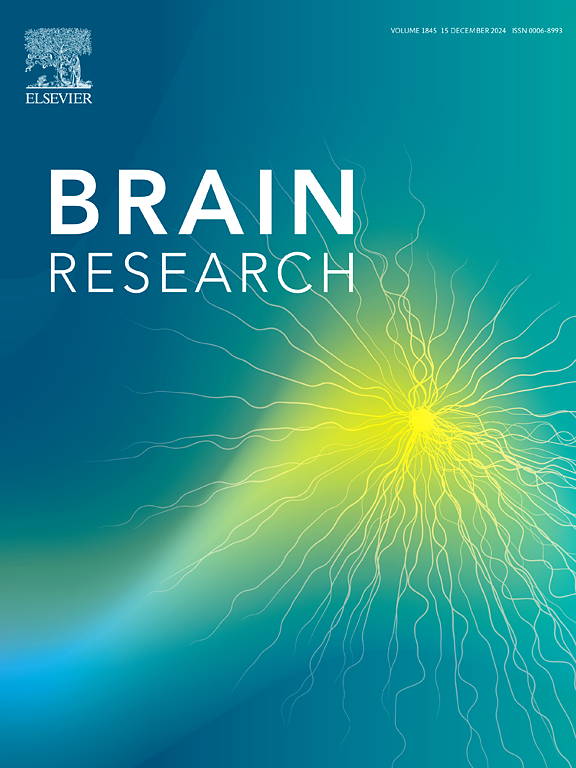基于任务态脑电图的主动、运动想象和被动脑卒中康复范例的脑网络差异分析
IF 2.7
4区 医学
Q3 NEUROSCIENCES
引用次数: 0
摘要
不同的运动范式对中风康复有不同的影响,而它们对大脑的作用机制还不完全清楚。本研究旨在探讨三种运动范式(主动、运动想象、被动)对脑卒中康复的脑网络和功能连接的差异。本研究记录了 11 名中风患者(SP)和 13 名健康对照组(HC)在三种范式下握拳和张开任务时的脑电信号。我们构建了脑网络,以分析脑网络连通性、节点强度(NS)、聚类系数(CC)、特征路径长度(CPL)和小世界指数(S)的变化。我们的研究结果显示,SP 对侧运动区的活动增加,而 HC 同侧运动区的活动增加。在β波段,SP在运动想象(MI)中表现出的CC明显高于主动和被动任务中的CC。此外,在贝塔波段的运动想象任务中,SP 的小世界指数明显小于主动和被动任务。MI范式中SP在伽马波段的NS明显高于主动和被动范式。这些研究结果表明,中风患者在进行MI任务时,同侧和对侧运动区都发生了重组,为神经重组提供了证据。总之,这些研究结果有助于加深对任务态脑网络变化和脑干损伤对运动功能的康复机制的理解。本文章由计算机程序翻译,如有差异,请以英文原文为准。
Analysis of brain network differences in the active, motor imagery, and passive stoke rehabilitation paradigms based on the task-state EEG
Different movement paradigms have varying effects on stroke rehabilitation, and their mechanisms of action on the brain are not fully understood. This study aims to investigate disparities in brain network and functional connectivity of three movement paradigms (active, motor imagery, passive) on stroke recovery. EEG signals were recorded from 11 S patients (SP) and 13 healthy controls (HC) during fist clenching and opening tasks under the three paradigms. Brain networks were constructed to analyze alterations in brain network connectivity, node strength (NS), clustering coefficients (CC), characteristic path length (CPL), and small-world index(S). Our findings revealed increased activity in the contralateral motor area in SP and higher activity in the ipsilateral motor area in HC. In the beta band, SP exhibited significantly higher CC in motor imagery (MI) than in active and passive tasks. Furthermore, the small world index of SP during MI tasks in the beta band was significantly smaller than in the active and passive tasks. NS in the gamma band for SP during the MI paradigm was significantly higher than in the active and passive paradigms. These findings suggest reorganization within both ipsilateral and contralateral motor areas of stroke patients during MI tasks, providing evidence for neural restructuring. Collectively, these findings contribute to a deeper understanding of task-state brain network changes and the rehabilitative mechanism of MI on motor function.
求助全文
通过发布文献求助,成功后即可免费获取论文全文。
去求助
来源期刊

Brain Research
医学-神经科学
CiteScore
5.90
自引率
3.40%
发文量
268
审稿时长
47 days
期刊介绍:
An international multidisciplinary journal devoted to fundamental research in the brain sciences.
Brain Research publishes papers reporting interdisciplinary investigations of nervous system structure and function that are of general interest to the international community of neuroscientists. As is evident from the journals name, its scope is broad, ranging from cellular and molecular studies through systems neuroscience, cognition and disease. Invited reviews are also published; suggestions for and inquiries about potential reviews are welcomed.
With the appearance of the final issue of the 2011 subscription, Vol. 67/1-2 (24 June 2011), Brain Research Reviews has ceased publication as a distinct journal separate from Brain Research. Review articles accepted for Brain Research are now published in that journal.
 求助内容:
求助内容: 应助结果提醒方式:
应助结果提醒方式:


